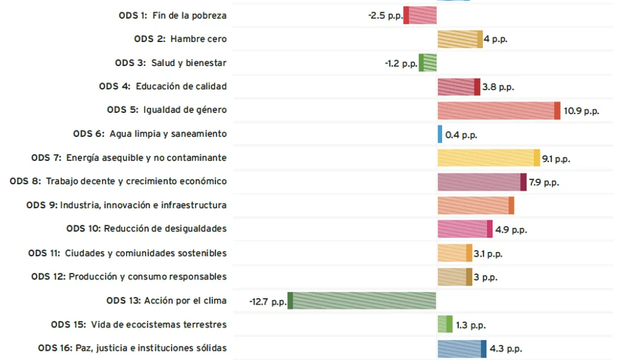Mexican Sustainable Cities Index 2021
Metropolitan areas in Mexico are halfway from meeting the SDGs, as the new edition of the “Sustainable Cities Index” highlights
The new edition of the “Sustainable Cities Index” in Mexico, released on June 21st by the National Public Policy Laboratory and Citibanamex, shows that metropolitan areas in Mexico are making progress on gender equality but are falling behind on environmental protection.
The 5th edition of the Mexican “Sustainable Cities Index 2021” was released on June 21st by the National Public Policy Laboratory (LNPP) and Citibanamex. The report – financed by Citibanamex and coordinated by the LNPP in collaboration with the Mexican Institute for Competitiveness and the Mario Molina Center – assesses the progress made by metropolitan areas in Mexico towards the Sustainable Development Goals (SDGs). Moderated by Alan X. Gómez Hernández (Vice-President of Sustainability at Citibanamex), the online launch event featured high-level panelists and members of the LNPP and Citibanamex. After Manuel Moro (Director of Citibanamex) gave an opening keynote speech, Alain de Remes (Research Coordinator at the LNPP) presented the main results of the report.
Using a set of 90 indicators, the report builds on the methodology engineered by the Sustainable Development Solutions Network (SDSN) to create SDG indices for 63 metropolitan areas in Mexico in the 17 SDGs, and a series of colored-coded dashboards indicating where each locality stands towards the goals and how they progressed (or regressed) since 2015. The report is a tool for local policymakers to better target their interventions, as it provides an overview of the major and specific challenges that cities are facing on social, environmental, and economic aspects.
Metropolitan areas in Mexico are half-way from meeting the SDGs, on average. The report shows that cities in Mexico have been making positive progress towards the SDGs since the adoption of the Goals in 2015, as their overall SDG index score increased by nearly 3 percentage points over the period 2015-2020. Findings reveals that metropolitan areas in Mexico have progressed around 56% of the way towards the SDGs. Nevertheless, large disparities in the SDG index divide the country: while Guadalajara, Hermosillo, and the newly created metropolitan area of Culiacán reach SDG index score above 60%, the index in metropolitan areas of Pozo Rica, Tehuantepec, and Tapachula remains below 45%.
The report highlights that the goals related to environmental protection (SDG 13 & 15) and sustainable production and consumption systems (SDG 12) are the ones obtaining the lowest average scores across all metropolitan areas. Most cities in Mexico made improvements on SDG 5 (Gender equality) and SDG 7 (Affordable and clean energy), respectively driven by a reduction in teenage fertility rates and better access to electricity, including from solar energy. Although metropolitan areas in Mexico experienced progress in most of the goals, they are today less advanced on the SDGs related to climate action and environment protection than they were in 2015, as few municipalities have integrated local plans against climate change. Cities in Mexico are also falling behind on the goals related to poverty eradication and health & well-being.
The “Sustainable Cities Index 2021” webtool details the results by indicators that compose the SDG index to further understand the results by goal. Understanding where cities stand on the SDGs is crucial for local and national policymaking. More and more sub-national governments are for example using the SDGs to build back better after the pandemic by designing efficient, green, and inclusive COVID-19 recovery plans. The “Sustainable Cities Index” report helps improve SDG measurement and data, which is a key step to reach the SDGs. The authors flag that many data gaps remain, including statistics on SDG 14 (Life below water) to better measure ocean protection.
For more information about this report, please visit the LNPP’s website , where you can read the full report (Spanish version), explore the results by metropolitan area and by indicator, and download the data.
